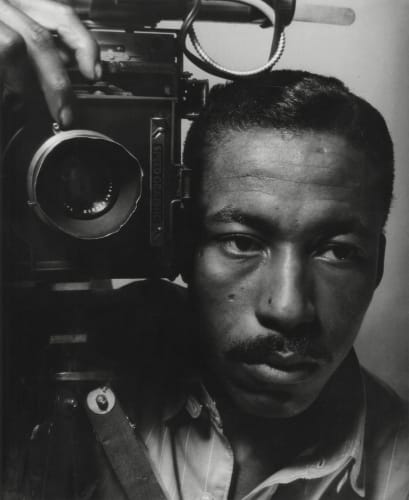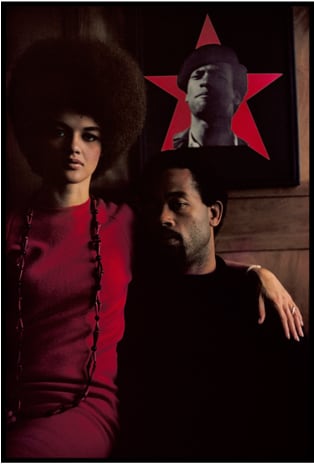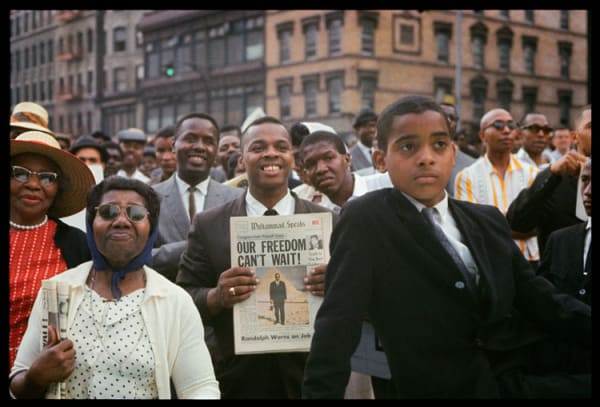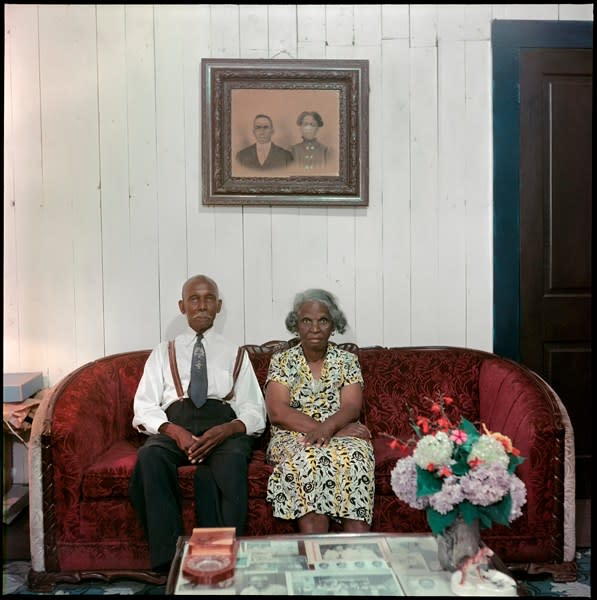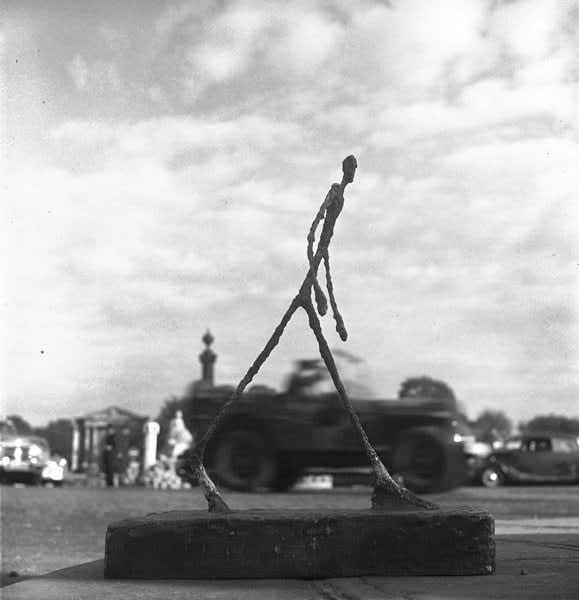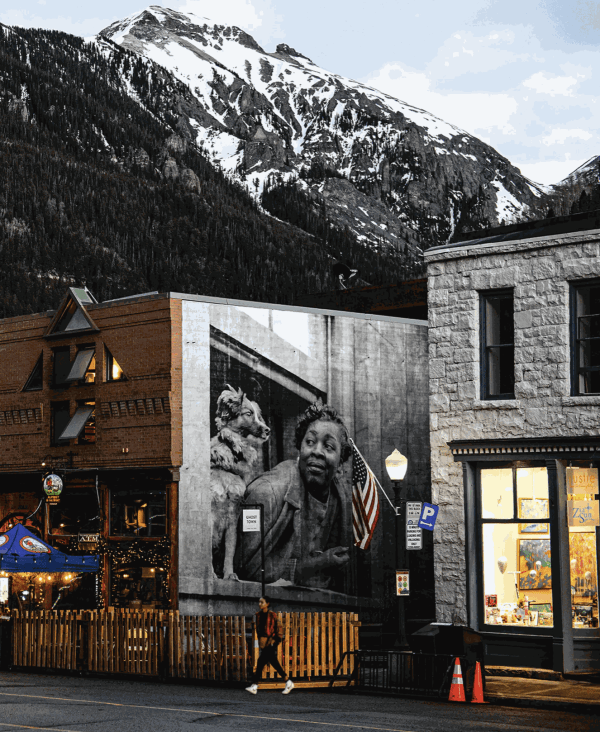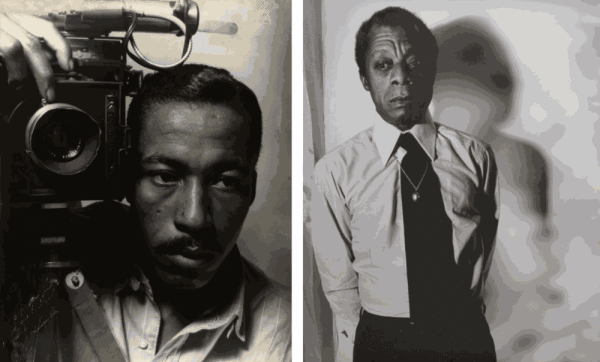Gordon Parks
Overview
Gordon Parks (b. Fort Kansas, MI, 1912-2006) was one of the seminal figures of twentieth-century photography and a humanitarian deeply committed to social justice. As the first Black photographer for Life Magazine, he documented crucial aspects of American culture from the 1940s to 2006, focusing on race relations, poverty, civil rights, and urban life, often putting himself at risk to capture pivotal moments in history. In addition to his photography, Parks was a celebrated composer, author, and filmmaker, engaging with many leading figures of his era, from politicians and artists to athletes and celebrities.
Born into poverty and segregation in Fort Scott, Kansas, in 1912, Parks was drawn to photography as a young man when he saw images of migrant workers taken by Farm Security Administration (FSA) photographers in a magazine. He worked several odd jobs until he bought a camera at a Pawn Shop in 1937 in Seattle and was hired to photograph fashion at a department store in Minneapolis. Receiving the Julius Rosenwald Fellowship in 1942, Parks joined the FSA and later the Office of War Information. He freelanced for Vogue and published two books on photography, Flash Photography (1947) and Camera Portraits: Techniques and Principles of Documentary Portraiture (1948). In 1948, Parks was hired by Life Magazine where he began to chronicle the nation’s societal conditions beginning with his first story, a piece on the gang wars that were consuming Harlem in the late 1940s. Parks found success when he met Red Jackson, a young Black man who led a gang known as the Midtowners and used his camera as a means to reflect his own complex ambitions in hoping to both bring Harlem’s brutality to light and present young men in quiet, contemplative moments and in the blurred heat of savage brawls.
Parks also gained access to the increasingly bellicose Black Muslim movement. When several white reporters were rebuffed in their requests for an audience with the group’s leaders, Parks—the only Black member of the magazine staff—was asked to try. During his investigations, he documented virtually every aspect of the Black Muslim community, in a full spectrum of images ranging from children and families at prayer to grown men exercising their physical strength in self-defense drills. Working for these agencies, Parks quickly developed a personal style that would make him among the most celebrated photographers of his era. His extraordinary pictures allowed him to break the color line in professional photography while he created remarkably expressive images that consistently explored the social and economic impact of poverty, racism, and other forms of discrimination. A true Renaissance man, Gordon Parks passed away in 2006.
Parks’ photographs are in many public collections including The Metropolitan Museum of Art, New York; The Museum of Modern Art, New York; The Corcoran Gallery of Art, Washington, DC; Library of Congress, Washington, DC; Museum of Fine Arts Boston, Massachusetts; The Art Institute Chicago, Illinois; Whitney Museum of American Art, New York; The J. Paul Getty Museum; and the International Center of Photography, New York. Recent exhibitions have been held at institutions including, The Museum of Fine Arts, Houston, Carnegie Museum of Art, Museum of Modern Art and Art Basel with Jenkins Johnson Gallery. Recent exhibitions include American Gothic: Gordon Parks and Ella Watson at the Minneapolis Institute of Art.
Works
-
 Eldridge Cleaver and His Wife, Kathleen, Algiers, Algeria, 1970
Eldridge Cleaver and His Wife, Kathleen, Algiers, Algeria, 1970 -
 Untitled, London, England, 1966
Untitled, London, England, 1966 -
 Black Muslim Rally, Harlem, New York, 1963
Black Muslim Rally, Harlem, New York, 1963 -
 Untitled Harlem NY 1963 (Do Not Cross) , 1963
Untitled Harlem NY 1963 (Do Not Cross) , 1963 -
 Untitled, Fort Scott, Kansas, 1963
Untitled, Fort Scott, Kansas, 1963 -
 Untitled, Harlem, New York, 1963
Untitled, Harlem, New York, 1963 -
 Watering Hole, Fort Scott, Kansas, 1963
Watering Hole, Fort Scott, Kansas, 1963 -
 Mr. and Mrs. Albert Thornton, Mobile, Alabama, 1956
Mr. and Mrs. Albert Thornton, Mobile, Alabama, 1956 -
 Untitled, Shady Grove, Alabama, 1956
Untitled, Shady Grove, Alabama, 1956 -
 Untitled, Chicago, Illinois, 1953
Untitled, Chicago, Illinois, 1953 -
 Emerging Man, Harlem, New York, 1952
Emerging Man, Harlem, New York, 1952 -
 Boys Waiting for Metro, Paris, France, 1951
Boys Waiting for Metro, Paris, France, 1951 -
 Untitled, Paris, France, 1951
Untitled, Paris, France, 1951 -
 Untitled, Paris, France, 1951
Untitled, Paris, France, 1951 -
 Untitled, Paris, France, 1951
Untitled, Paris, France, 1951 -
 Comtesse Alain de la Falaise, Paris, France, 1949
Comtesse Alain de la Falaise, Paris, France, 1949 -
 Untitled, 1941
Untitled, 1941 -
 Doll Test, Harlem, New York, 1947
Doll Test, Harlem, New York, 1947 -
 Untitled, Washington, D.C. (from I Am You Series), 1963
Untitled, Washington, D.C. (from I Am You Series), 1963 -
 Untitled, Alabama, 1956
Untitled, Alabama, 1956 -
 Untitled, Shady Grove, Alabama, 1956
Untitled, Shady Grove, Alabama, 1956
Press
-

Curators' Picks: Art Basel
Artsy, June 18, 2025 -

Brooklyn According to: Karen Jenkins-Johnson of Jenkins Johnson Gallery
The gallerist talks about loving her Brooklyn community, why the recent Whitney Alvin Ailey show was so important and where to find the best roast chicken in New YorkChris Waywell, FRIEZE, March 20, 2025 -

Jenkins Johnson Gallery gives us ‘Infinite Hope’ with Black photographer celebration
Tony Bravo, Datebook, February 13, 2025 -

Black photographers speak hope to power in SF exhibit
Max Blue, San Francisco Examiner , February 11, 2025 -

Infinite Hope is a powerful celebration of Black excellence and humanity
Tallulah Baird, The Daily Californian , February 3, 2025 -

Here Are 11 Exhibitions You Can't Miss While in San Francisco For FOG
When you have a moment to step outside the fair, make sure to put one (or all) of these shows on your to-do list.Katie Kern, Cultured, January 20, 2025 -

Must See Art Exhibitions Closing in January 2025
Visit these Eleven Exhibitions Before They CloseThe Arts District, January 2, 2025 -

GET LIT! Gordon Parks' Latest Photobook and Other Black Authors to Read this December
Delaina Dixon, EBONY, December 3, 2024 -

Big ideas: a celebration of French artist JR’s installations – in pictures
Kathryn Bromwich, The Guardian, September 14, 2024 -

Gordon Parks exhibit elicits multi-sensorial experience of his trailblazing career
Hailey Roy, The Daily Orange, September 1, 2024 -

Reframing Gordon Parks and James Baldwin
Exhibits at The National Gallery and National Portrait Gallery Offer a New Conversation Between Two Iconic Artists and ActivistsColey Grey, BmoreArt, August 28, 2024 -

Four Great Photography Books Where Words Add Power to Pictures
New collections by Gordon Parks, Platon, Peter van Agtmael and Myriam Boulos reveal when you need to tell as well as show.Arthur Lubow, The New York Times, August 3, 2024 -

Here Are 5 of the Best Booths at Frieze New York, From Metaphysical Landscapes to Playful Ceramics and a Revelatory Redi
Melissa Smith, artnet news, May 19, 2022
Exhibitions
-

Infinite Hope
21 Jan - 1 Mar 2025January 21 - March 01, 2025 Opening Reception: Tuesday, January 21, 2025, 5:00PM-8:00PM Artists Talk 6:30pm, moderated by Key Jo Lee, Chief of Curatorial Affairs and Public Programs, Museum of...Read more -

The Culture From Which I Sprang
13 Jul - 21 Sep 2024Jenkins Johnson Gallery announces its West Coast exhibition The Culture From Which I Sprang , commemorating the 60th Anniversary of the Civil Rights Act of 1964. It features work by...Read more -

Summertime...
Wesaam Al-Badry, Kevin Cole, Dewey Crumpler, Alex Jackson, Wycliffe Mundopa, Gordon Parks, and Raelis Vasquez 8 Jul - 25 Aug 2023Jenkins Johnson Gallery is pleased to announce Summertime..., a cross-generational and multi-cultural exhibition featuring Wesaam Al-Badry, Kevin Cole, Dewey Crumpler, Alex Jackson, Wycliffe Mundopa, Gordon Parks, and Raelis Vasquez. Works...Read more -
Summertime
Gordon Parks, Ming Smith, Alex Jackson, Dewey Crumpler, Lola Flash, Lisa Corinne Davis, Nnenna Okore, Ben Aronson, and Scott Fraser 19 Aug - 10 Sep 2022Read more -

Reflections
Michael Eastman, Aïda Muluneh, Gordon Parks, Ming Smith, and Lissette Solórzano 11 Mar - 3 Apr 2021Jenkins Johnson Gallery is pleased to present Reflections , a group exhibition featuring works by Michael Eastman, Aïda Muluneh, Gordon Parks, Ming Smith, and Lissette Solórzano. This collection of photography...Read more -

Summertime...
Wesaam Al-Badry, Ben Aronson, Scott Fraser, Julia Fullerton-Batten, Hendrik Kerstens, Aida Muluneh, Blessing Ngobeni, and Gordon Parks 6 Jun - 30 Aug 2019Jenkins Johnson Gallery is pleased to present Summertime... , a group exhibition featuring artists working across disciplines. This international show brings together emerging artists with more established ones, creating a...Read more -

Winter Selections
15 Jan - 9 Mar 2019Jenkins Johnson Gallery is pleased to present Winter Selections , a collection of artworks by emerging artists of color in dialogue with works by prominent artists of diverse backgrounds. In...Read more -

Summertime...
Harlan Mack, Devin N. Morris, Enrico Riley, and Kennedy Yanko from Jenkins Johnson Projects with works by Wesaam Al-Badry, Ben Aronson, Julia Fullerton-Batten, Lalla Essaydi, Ken Graves & Eva Lipman, Aida Muluneh, Blessing Ngobeni, Nnenna Okore, Paccarik 18 Jul - 15 Sep 2018Jenkins Johnson Gallery is pleased to announce Summertime… , a cross-generational exhibition that brings artists from Jenkins Johnson Projects, Brooklyn into conversation with our San Francisco Gallery. This international show...Read more -

Spring Selections
Lalla Essaydi, Aida Muluneh, Nnenna Okore, Julia Fullerton-Batten, Wesaam Al-Badry, Blessing Ngobeni, Omar Victor Diop, Gordon Parks, Hendrik Kerstens, and Julian Opie 22 Mar - 12 May 2018In celebration of Women’s History Month, Jenkins Johnson Gallery is pleased to announce Spring Selections , an exhibition of contemporary works by international artists contributing to the advancement of women's...Read more -

Legacy
Gordon Parks 2 Nov - 9 Dec 2017J enkins Johnson Gallery is pleased to announce Gordon Parks: Legacy ; a multi-media exhibition exploring the relationships between the works of Gordon Parks and the works of artists he...Read more -

Summertime
27 Jul - 23 Sep 2017Jenkins Johnson Gallery, San Francisco is pleased to present Summertime , a group exhibition featuring socially informed works by artists working in a variety of disciplines including painting, photography, sculpture,...Read more -

Humanity Today
Sadie Barnette Victor Ehikhamenor, Aida Muluneh, Carlos Javier Ortiz, Blessing Ngobeni, Gordon Parks, and Lissette Solórzano 2 Feb - 11 Mar 2017Jenkins Johnson Gallery, San Francisco is pleased to announce Humanity Today , a group exhibition on display from February 2 through March 11, 2017. The exhibition highlights current tensions surrounding...Read more -

Summertime...
14 Jul - 3 Sep 2016Read more -

Higher Ground
Gordon Parks 4 Feb - 2 Apr 2016Jenkins Johnson Gallery, San Francisco is pleased to present Gordon Parks: Higher Ground, a solo exhibition of over sixty works by one of the most important photographers of the 20th...Read more -

Director's Pick
8 Jan - 28 Mar 2016Jenkins Johnson Gallery, San Francisco is pleased to present Director’s Pick, a group exhibition that showcases recent work by gallery artists and introduces two artists to the gallery—Melanie Pullen and...Read more
Art Fairs
-
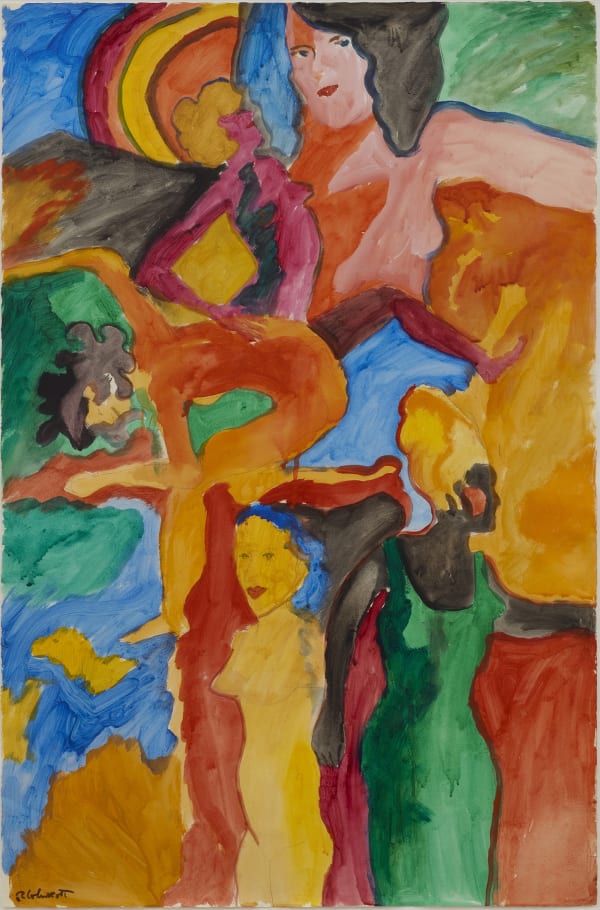
Art Basel, Basel
17 - 22 Jun 2025Opening June 17, Jenkins Johnson Gallery is pleased to return to Basel, Switzerland for the 2025 edition of Art Basel. Our presentation this year features...Read more -
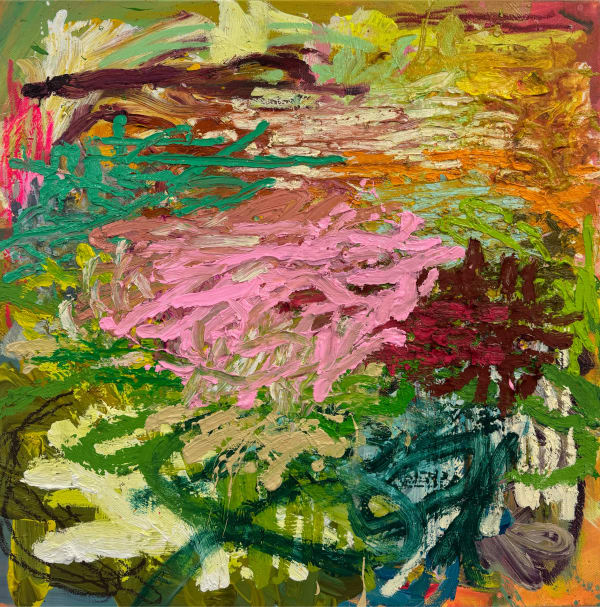
FOG Design + Art 2025
23 - 26 Jan 2025Jenkins Johnson is pleased to participate in FOG Design+Art 2025. Join us in Booth 107 for the Preview Gala on Wednesday January 22 . The...Read more -

Art Basel Miami Beach 2024
6 - 8 Dec 2024Jenkins Johnson Gallery is pleased to participate in the 2024 edition of Art Basel Miami Beach . This year is our largest and most ambitious...Read more -

Paris Photo 2024
Booth B10 7 - 10 Nov 2024Jenkins Johnson Gallery is pleased to participate in the 27th edition of Paris Photo with, “To Paris with Love,” highlighting artists from the 1950s to...Read more -
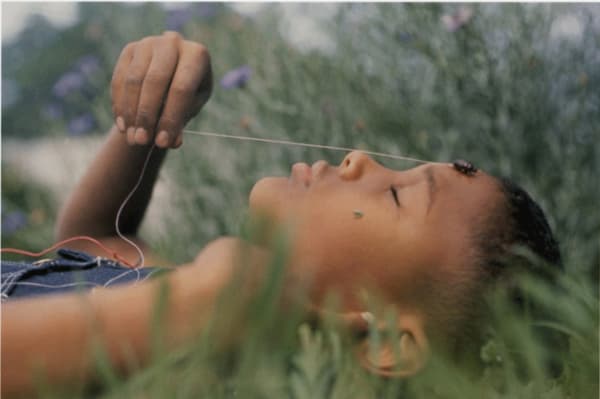
Art Basel 2024
Booth C12 10 - 16 Jun 2024Jenkins Johnson Gallery presents works by Patrick Alston, Mustafa Ali Clayton, Dewey Crumpler, Lisa Corinne Davis, David Driskell, Wadsworth Jarrell, Mary Lovelace O’Neal, Ming Smith,...Read more -

Art Basel | Miami Beach
Miami, FL 6 - 10 Dec 2023Jenkins Johnson Gallery will participate in Art Basel Miami Beach, December 8 - 10, 2023 Booth B31. We will feature artists that explore social and political issues of the African Diaspora by connecting past and current moments: Mary Lovelace O'Neal, Wadsworth Jarrell, Gordon Parks, Ming Smith, Patrick Alston, Adrian Burrell, Dewey Crumper, Lisa Corinne Davis, Violet Fields, Alex Jackson, Blessing Ngobeni, Gregory Rick, Enrico Riley, and Raelis Vasquez. Jenkins Johnson Gallery will be participating in the Kabinett sector with a solo presentation of works on paper by Mary Lovelace O'Neal, featuring her iconic Lampblack (1970's) and Desert Women (1990's) series. In the Lampblack drawings she layers black charcoal and pastel, allowing slivers of negative space to invade the surface. These drawings speak to her affair with an "uncluttered minimalist viewpoint", invoking both a cultural and aesthetic sentiment. In Desert Women series, Lovelace O'Neal portrays garments worn in the Sahara Desert in Egypt and the Atacama Desert in Chile. She studied with master printmaker James Lesene Wells and at The Robert Blackburn Printmaking Workshop. Lovelace O'Neal creates based on feeling and perception, forming moments of fleeting light. Her work is in museums including the Art Institute of Chicago, San Francisco Museum of Modern Art, Baltimore Museum, DeYoung Museum, and Brooklyn Museum. She has an upcoming solo exhibition at the San Francisco Museum of Modern Art in Spring 2024.Read more -
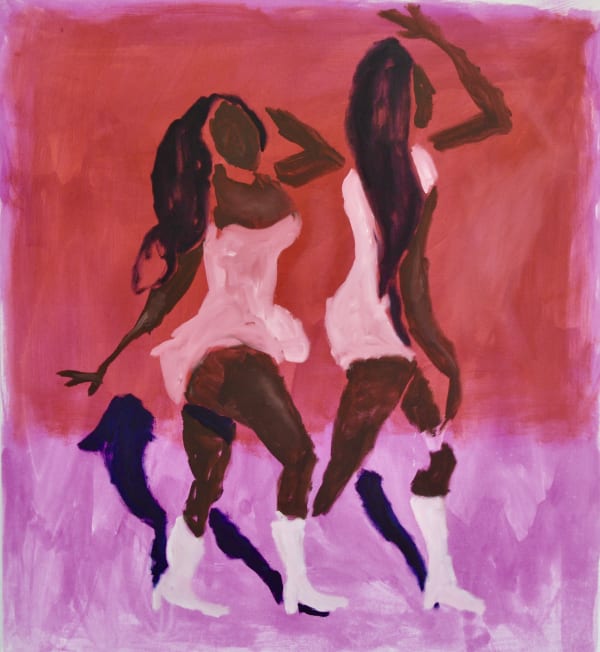
Frieze Los Angeles
Los Angeles, CA 16 - 19 Feb 2023Jenkins Johnson Gallery was pleased to participate in Frieze Los Angeles 2023 at Booth C8. We presented works by Patrick Alston, Lola Flash, Alex Jackson,...Read more -

Art Basel | Miami Beach
Miami, FL 29 Nov - 3 Dec 2022Jenkins Johnson Gallery were thrilled to participate in Art Basel Miami Beach. The fair took place at the Miami Beach Convention Center from November 29...Read more -

Art Basel
Basel, Switzerland 16 - 19 Jun 2022Jenkins Johnson Gallery exhibited at Art Basel,which occured June 16-19, 2022. We presented the works of Lisa Corinne Davis, Jae Jarrell, Wadsworth Jarrell, Gordon Parks,...Read more -
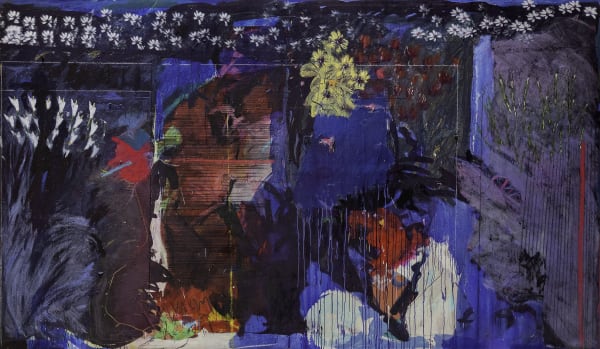
Frieze NY
New York, NY 18 - 22 May 2022Jenkins Johnson Gallery exhibited at Frieze New York, which occured May 18-22, 2022. We presented the works of Sydney Cain, Lisa Corinne Davis, Alex Jackson,...Read more -
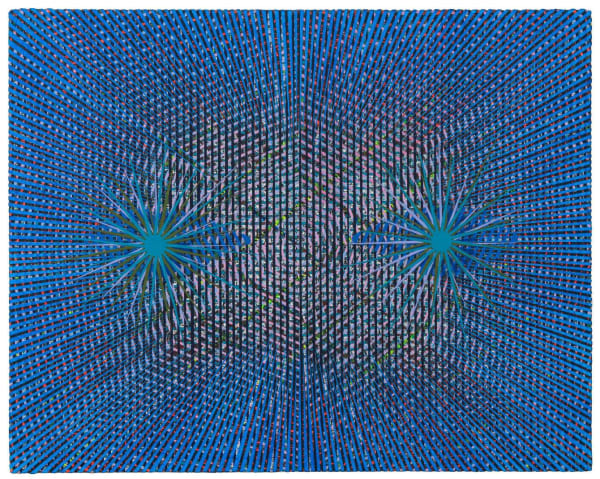
Frieze Los Angeles
Los Angeles, CA 17 - 20 Feb 2022Jenkins Johnson Gallery exhibited at Frieze Los Angeles,which occured Feburary 17-20, 2022. We presented the works of Lisa Corinne Davis, Lola Flash, Alex Jackson, Wadsworth...Read more -

The Armory Show
New York, NY 9 - 12 Sep 2021Jenkins Johnson Gallery was pleased to participate in The Armory Show 2021 at the Javits Center from September 9th - 12th. We presented a selection...Read more -

Frieze New York
New York, NY 5 - 9 May 2021Jenkins Johnson presented artists who explore social and political issues of the Diaspora by bridging past and contemporary moments: Wadsworth Jarrell, Gordon Parks, Ming Smith,...Read more -
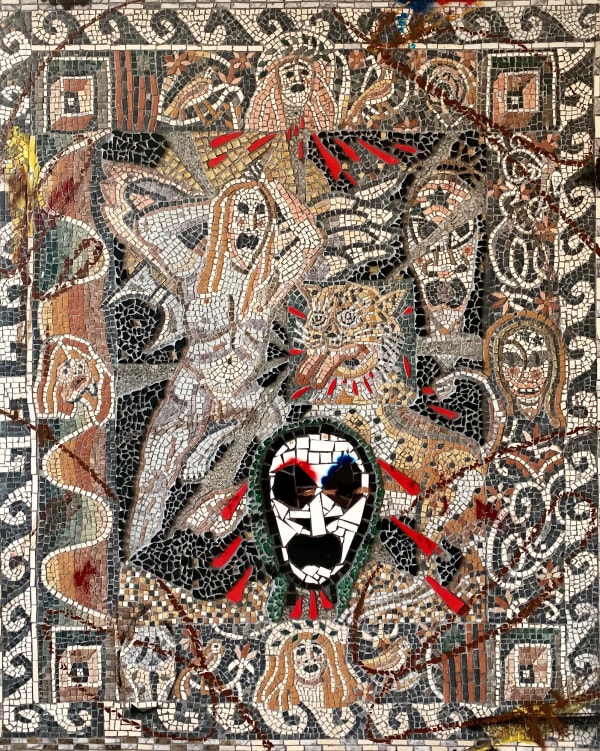
Art Basel Miami Beach
Miami Beach, FL 3 - 6 Dec 2020Jenkins Johnson presented artists who explore social and political issues of the Diaspora by linking past and contemporary moments. To strengthen this connection, we will...Read more -

FOG Design + Art
San Francisco, CA 15 - 19 Jan 2020Jenkins Johnson Gallery is pleased to announce its participation in FOG Design + Art at Fort Mason Center, January 15-19, 2020 in Booth 304. We...Read more -

UNTITLED, Miami Beach
Miami Beach, FL 3 - 8 Dec 2019Jenkins Johnson Gallery is pleased to announce its participation in UNTITLED, Miami Beach, December 3-8, 2019 in Booth B29. This presentation will feature artists including...Read more -

The Photography Show presented by AIPAD
New York, NY 5 - 8 Apr 2018Jenkins Johnson Gallery is pleased to present the work of Wesaam Al-Badry, Devin N. Morris, Aida Muluneh, Blessing Ngobeni, Gordon Parks, and Mimi Plumb.Read more -

EXPO Chicago
Chicago, IL 13 - 17 Sep 2017Jenkins Johnson Gallery is pleased to announce its participation in Expo Chicago at Navy Pier, September 13–17, 2017 in booth 645. Jenkins Johnson will feature...Read more -

Art Basel
Basel, Switzerland 15 - 18 Jun 2017Jenkins Johnson Gallery is pleased to announce participation in Art Basel, Feature with a solo presentation of civil rights photographs by Gordon Parks, and Art...Read more -

1:54 London
London, UK 5 - 9 Oct 2016Jenkins Johnson Gallery is pleased to announce its participation in 1:54 Contemporary African Art Fair London, 2016. We will present works by Sadie Barnette, Kenyatta...Read more -

Seattle Art Fair
Seattle, WA 4 - 7 Aug 2016Jenkins Johnson Gallery is pleased to announce our participation in the 2016 edition of the Seattle Art Fair. We will be presenting works by Omar...Read more -

Art Brussels
Brussels, Belgium 21 - 24 Apr 2016Jenkins Johnson Gallery is pleased to announce our participation in Art Brussels. We will be presenting works by Gordon Parks and Hendrik Kerstens.Read more -

The Photography Show Presented by AIPAD
New York, NY 14 - 17 Apr 2016Jenkins Johnson Gallery is pleased to announce our participation in the 2016 edition of The Photography Show Presented by AIPAD. We will present a selection...Read more

